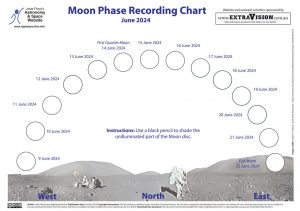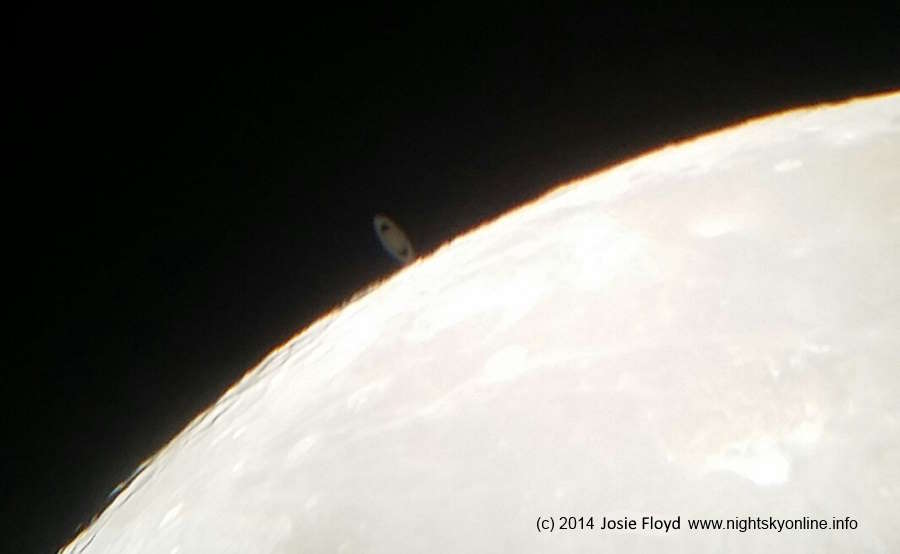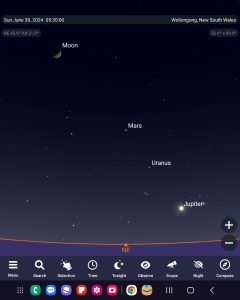Use the finder charts on this page to guide you to where to look for the planets in June 2024.
Don’t have a telescope to look at the planets or Moon? Remember you can contact your local astronomical society about holding a telescope viewing session for your school, youth group or other organisation.
A few pointers:
- All planets visible to the unaided eye look like stars. Planets visible to the unaided eye include Mercury, Venus, Earth (look down!), Mars, Jupiter and Saturn.
- Planet visibility in 2024
- TimeandDate.com will generate customised visiblity information for your location. Just make sure you specify where you are.
- You can download planet rise and set times for different Australian capital cities from Quasar Publishing’s site.
- In a telescope, Uranus and Neptune are visible as tiny discs. The minor planet Pluto remains looking like a star in even the largest amateur telescope.
- Stars are shown to magnitude 5 on the charts unless otherwise noted. This is a compromise between what you would see from the light polluted skies of a city (where you will see significantly less stars) and dark country skies (where you will see significantly more stars).
- Unless otherwise noted, the finder charts are prepared for Wollongong, NSW. The charts will be useful for elsewhere in Eastern Australia including Canberra.
- Planet finder charts usually focus on when the Moon is next to a particular planet. That lets beginning astronomers use the Moon as a ‘signpost’ to find that particular planet.
International Space Station visible in Mid-June 2024 evening twilight
Mid-June 2024 presents a wonderful opportunity to see the International Space Station pass silently overhead in the evening twilight sky. Viewing times will depend on your location in Eastern Australia. View this separate post for more information.
3 June 2024 – Moon and Mars – Morning pre-dawn sky
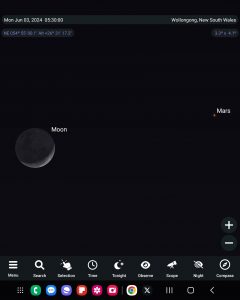
3 June 2024 – The planets align in the bright morning twilight sky
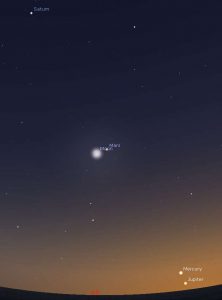
A unusual planetary alignment will be visible in the 3-5 June 2024 morning sky. Six of the Solar Systems largest celestial objects, the Moon, Mercury, Mars, Jupiter, Saturn, Uranus and Neptune will be appear to be in a temporary line. Note that Uranus and Neptune will require a telescope to view.
Start by looking high in the sky ideally BEFORE twilight starts for a pale yellow star. That will be the planet Saturn. Then look below Saturn for the crescent Moon and an orangish star to the right of the Moon (3 June 2025 only). That will be Mars. Depending on your sky conditions, you may be able to see Mercury and Jupiter very low on the horizon. Unfortunatly those planets don’t rise until after bright twilight has begun. Binoculars are probably going to be required to locate both.
5 June 2024 – Moon, Mercury and Jupiter – Bright morning twilight sky
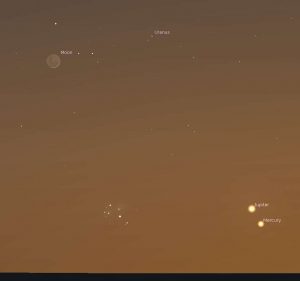
9 to 22 June 2024 – Record the changing appearance of the Moon – Evening twilight sky
An easy but rewarding observing activity is to record the changing appearance of the Moon between New Moon and Full Moon. If you observe it at the same time each evening (end of evening twilight), you will notice that the Moon moves from the West to the East. This movement demonstrates the Moon’s movement in it’s orbit around the Earth. Download the recording chart.
14 June 2024 – Mars, Jupiter and Saturn – Morning pre-twilight sky
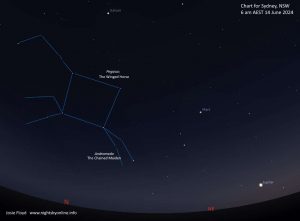
15 June 2024 – Winter Milky Way – Early evening night school
June’s evening skywatching evening highlight is the Winter Milky Way. This is our home galaxy of which we are part. You will need to drive away from city lights however. It is a breathtaking sight if you have never seen it before! Don’t forget to look for what looks like dark clouds in front of it. These dark patches are dark nebula. They are enormous clouds of gas and dust that block the light of stars behind them. The most well known from an European astronomy viewpoint is the Coal Sack nebula. It is located near the Southern Cross. What should be even more well known is the dark constellation referred to by some First Nations peoples as the Emu. If you are looking for it, start by imaging the Coal Sack nebula as the head of the emu. Then look to the left of the Coal Sack nebula along the Milky Way. The body of the Emu is made up of more dark nebula.
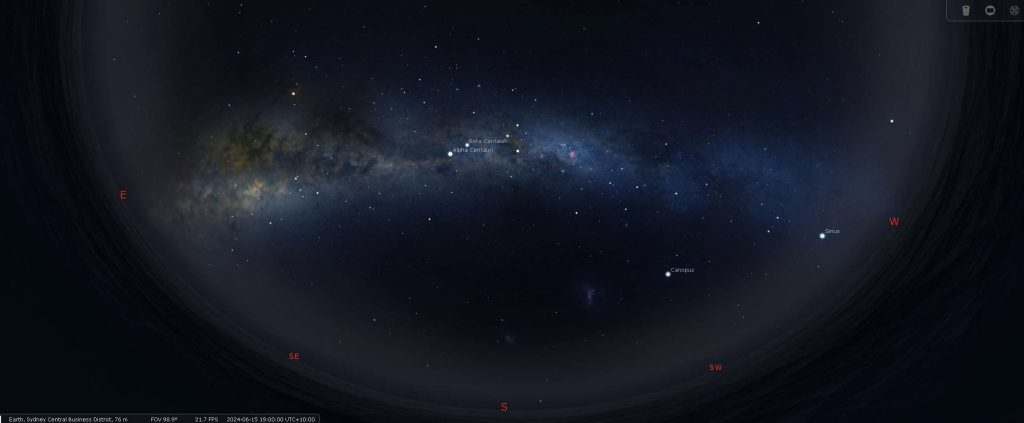
27 June 2024 – Moon occults Saturn – Evening sky
The Moon will occult (move in front of) the planet Saturn on the evening of Thursday 27 June 2024.
As seen from Sydney (New South Wales), Saturn will rise at 22.36 pm AEST very close to the Moon. It appears as a pale yellow star to the unaided eye. From Sydney, Saturn will ‘disappear’ behind the bright limb of the Moon at 10.55 pm AEST. Saturn then reappears at 11.41 pm AEST from the dark limb of the Moon. Times will vary for other locations in Australia.
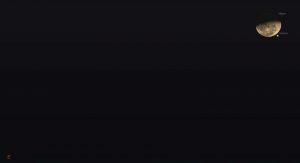
The occultation will be visible to the unaided eye. Saturn will appear as a pale yellow star. Saturns rings themselves will require a telescope to observe.

If you have a telescope, try photographing the Moon and Saturn using your mobile phone. With some practice and patience, it is possible to get a photograph of the two together.
